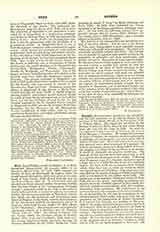

Gury, JEAN-PIERRE, moral theologian; b. at Mailleroncourt, Haute-Saone, January 23, 1801; d. at Mercceur, Haute-Loire, April 18, 1866; entered the Society of Jesus at Montrouge, August 22, 1824; he taught moral theology for thirty-five years at the seminary of Vals, France, 1834-47 and 1848-66, and for one year at Rome, 1847-48. It was in 1850, after his return from Rome necessitated by the events of 1848, that the first edition of his “Compendium theologiae moralis” appeared, which at the time of the author’s death had reached the seventeenth edition, to mention neither the German translation of Wesselack (Ratisbon, 1858), nor the imitations and adaptations published in Belgium, Italy, Spain, Austria, and Germany. In the last-named country the annotated edition of Professor Seitz itself already reached the fifth edition in 1874 (Ratisbon). Deserving of note is the specially annotated edition of A. Ballerini and D. Palmieri (Prato, 15th ed., 1907); the edition of Dumas (5th ed., Lyons, 1890); the abridged edition of Sabetti-Barret (New York and Cincinnati, 1902, 16th ed.); the edition adapted to Spain and Latin America by Ferreres (Barcelona, 4th ed., 1909); finally the “Compendium ad mentis P. Gury” by Bulot (Tournay and Paris, 1908). In 1862, Gury published his “Casus conscientiae in praecipuas quaestiones theologiae moralis”. Of this work the following editions have appeared: Dumas, 8th ed., Lyons, 1891; Ferreres, for the second time in 1908 (Barcelona); and a German edition at Ratisbon (7th ed., 1886).
The brevity of the compendium led inevitably to a lack of scientific solidity. For the uses of his classes at Vals, Gury lithographed a more scientific manual which was unhappily never published. His mind was essentially practical, orderly and clear. His method was to proceed by question and answer, taking in the exposition of principles and their conclusions, and finally adding the discussion of more special points. He also knew how to blend happily in his lessons solidity and variety, a quality that gained for him the appointment to the chair of moral theology at the Roman College from Father General Roothaan. Opportunity for actual contact with souls was afforded him by numerous confessions, which he heard during retreats and missions conducted by him in vacations. An ardent follower of Busenbaum and of St. Alphonsus Liguori, he contributed largely towards the extirpation of Jansenism, and is accounted besides one of the restorers of the old casuistic method, a fact that made him worthy of personifying the “Jesuit Moral” in the eyes of some, who, especially in Germany, attacked his doctrine.
J. SALSMANS

